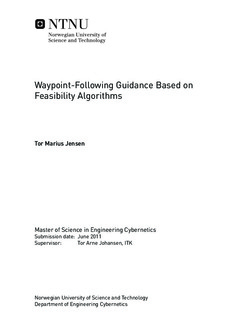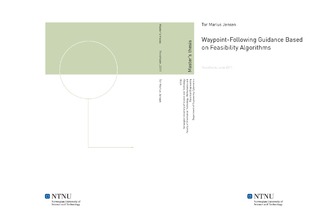| dc.description.abstract | Unmanned vehicles have become more applicable due to extended research and more advanced technology through the last decades. The vehicles are versatile, hence studying ocean floor and reconnaissance and surveillance are popular areas of application. To perform unmanned operations, waypointfollowing based on guidance, navigation and control systems are used in general. Unfortunately, not every waypoint setup guarantees a feasible trajectory as regards to the vehicle dynamics. Thus, algorithms analyzing the feasibility of the paths and suggesting solutions for infeasible paths have been proposed in this master s thesis. Four different tangent vector calculation methods have been used to develop smooth, parameterized C1-continuous curves as suitable paths between the successive waypoints. The appurtenant path curvature has been calculated and compared against the vehicle dynamics and constraints. Minimum vehicle turning radius is mapped directly to maximum trajectory curvature. When waypoint placement provides infeasible trajectories, three different algorithms of moving, adding or removing waypoints have been suggested tocope with the trajectory curvature. For pure waypoint-following schemes without path generation, adapted velocity and acceptance circle radius have been applied. The adapted reference values are functions of the angle between the neighboring waypoints, and turns out to yield more efficient operations with respect to time and overshooting errors than with constant values. Employing path generation proves that the effect of preturns before approaching waypoints in addition to regulating velocity according to path curvature is beneficial to minimize deviation from waypoints. If, however, the trajectory is infeasible even after velocity adaption, one of the three path altering algorithms may be applied to provide a feasible path.The simulations have been carried out in MATLAB/Simulink on two models; a first order Nomoto autopilot model and a more complex mathematical model of a Viknes 830 unmanned surface vehicle. Despite simulating on boat models in R2, the path planning ideas and trajectory feasibility check can be employed on various types of unmanned vehicles, and -extended to R3. | nb_NO |

